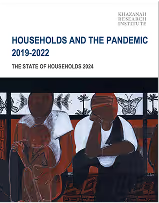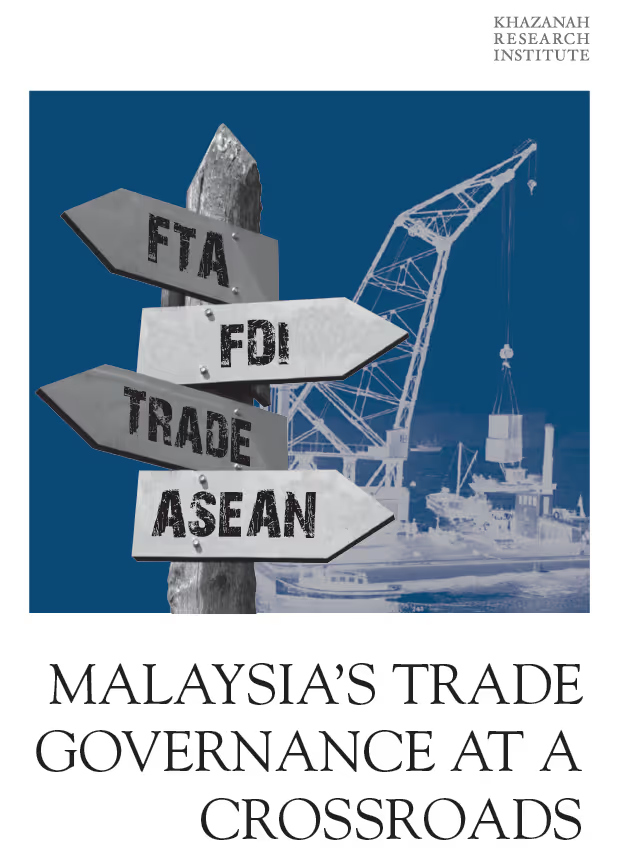
1. INTRODUCTION
Education is a pivotal component in building human capital Malaysia's most important asset in its transformation into a developed economy. Common education indicators such as mean years of education (which increased from 9.0 years in 1999 to 11.2 years in 2015), adult literacy rates (which increased from 88.0% in 1999 to 95.3% in 2015) and net enrolment rate suggest that Malaysian students should be well-equipped to rival the performance of the world's top competitors in education and future outcomes in life. However, in investigating international assessments in education, the optimistic numbers in these indicators do not translate into concrete results in test performance.
The paper begins with a literature review of the relationship between human capital and economic growth, and why education indicators are used as a measure of human capital. Next we turn to an analysis of education indicators in Malaysia and what they tell us about the educational landscape of the country and the test performances of students. We offer possible explanations for the underwhelming TIMSS scores of Malaysian students, namely that teachers may not be sufficiently equipped to teach science and mathematics effectively and that parents may lack sufficient direct involvement in their children's education. We suggest that the detrimental effects of these potential explanations may be exacerbated by the widespread phenomenon of tutoring. Finally, we suggest next steps that may shed more light on why Malaysian students are not performing as well as might be expected.
2. LITERATURE REVIEW
Extensive research has been conducted on the relationship between human capital and economic growth. Human capital refers to the collective skills and abilities of a given population and it impacts economic growth through its effect on productivity. While this relationship is clear in theory, deciding upon an indicator of human capital is challenging in practice. This is because the resulting effect on economic growth varies depending on which indicator of human capital is used.
In investigating the stock of human capital in empirical growth research, a common denominator between the different measurements is that they are based on indicators of education. Popular measurements of human capital include school attainment, school enrollment ratios, adult literacy rates, average years of schooling and school quality.
In early literature on the relationship between human capital and growth, adult literacy rates were commonly used as the main indicator for human capital. However, authors concede that adult literacy is not a sufficient measurement for growth rate variations within high-income countries, whose literacy rates are consistently between 98 to 100 percent.
School enrolment ratio is defined by UNICEF as the number of children enrolled in a level (primary or secondary), regardless of age, divided by the population of the age group that officially corresponds to the same level. Woßmann (2003) sums up three key critiques regarding school enrolment ratios, the first being that it is more accurately a measure of human capital for the labour force of the future, and not for that in the current period. Secondly, current enrolment is susceptible to changes due to grade repetition and dropouts, and it is also not guaranteed that certain graduates will participate in the workforce at all.
While the above indicators do provide insight into the educational landscape of different countries, they do not capture the quality of education provided in schools. International assessments such as the TIMSS (Trends in International Mathematics and Science Study) and PISA (Program for International Student Assessment) can provide international comparisons based on student outcomes in Mathematics, Science and Reading. The PISA assesses 15-year-olds across the world regardless of their level of education while the TIMSS assesses students with 8 years of formal education (Form 2 in Malaysia). In 2015, 9,726 students from 207 schools in Malaysia participated in the TIMSS. Additionally, 652 teachers were surveyed.
3. SNAPSHOT OF EDUCATION IN MALAYSIA
Since 1999, almost every child in Malaysia has received primary education. Similarly, a satisfactory enrolment rate in secondary education is seen in Malaysia, with evidence of an upward trajectory. However, a net enrolment rate of 73.4% in 2016 still falls far behind that of OECD countries, which have an average net enrolment rate of 89.9%. The growth of human capital in Malaysia (an impressive increase of 123% from 1995 to 2014) conceals the fact that there are underlying deficiencies in the quality of education in Malaysia overall.
Underlying cracks behind this optimistic outlook manifest as further education indicators are analysed. Malaysia has not fared well in international assessments such as the TIMSS assessment. When Malaysia first participated in the TIMSS in 1999, it did comparatively well, almost matching OECD scores. Unfortunately, this was followed by a downward trend whilst Singapore has consistently done well and improved throughout the years. Malaysia's worst performance was in 2011 with an average of 440 across the Mathematics and Science components of the 8th grade TIMSS assessment. Following this, a new curriculum was implemented at the primary level in 2011 and the existing mathematics and science curricula at the secondary level were revised and put in effect in 2017. This preceded a slight improvement in 2015, with the average score increasing slightly to 465.
Schooling experience in Malaysia is also less effective compared to Singapore. Based on Malaysia's TIMSS performance, we find that while mean years of schooling in Malaysia has increased, the effective years of schooling has remained somewhat stagnant. For instance, in 2015, the mean years of schooling for Malaysian students was 11.2 years, but only about 8.6 years were effective, meaning 2.6 years were wasted. Most Asian countries which conducted the assessment outperformed Malaysia significantly, at most wasting 6% of time in school.
Examining the TIMSS scores in detail reveals that students with more resources or students who attend affluent schools do better within each country. The gap between the scores of students who attended affluent schools and disadvantaged schools is rather large in Malaysia at a 94.5 point difference. The only country where the gap exceeds that of Malaysia is Singapore with a 108.5 point difference. While reducing intra-country differences is important, it is necessary to think about inter-country differences. Even the most advantaged students in Malaysia, i.e. the students with many resources or those who attended affluent schools, performed worse than the worst-off students in Singapore, i.e. those with few resources or who attended disadvantaged schools.
The Malaysia Education Blueprint 2013-2025 suggests three possible reasons for this situation: insufficient coverage of topics tested in TIMSS, a language barrier, and the sampling approach, but quickly refutes these reasons. Instead, we suggest that some of these underlying issues might be traced back to the quality of teaching in Malaysia and the extent of direct parental involvement in their children's education.
4. QUALITY OF TEACHING IN MALAYSIA
About 65% of primary school teachers are equipped with at least a Bachelor's degree, while over 95% of secondary school teachers have at least a Bachelor's degree, far outnumbering the remainder with teaching certificates or diplomas. Fourteen point two percent of Malaysian tertiary graduates studied Education in 2016, making it the third most popular field of study. The popularity of education as a major implies that there are enough graduates equipped to teach in Malaysia. However, certain subjects tend to have more available positions than teachers, while others experience an oversupply.
Furthermore, in 2011, the average teacher in Malaysia spends less than 3 hours per day teaching compared to around 4 hours in OECD countries. The rest of the teacher's time is spent on administrative tasks including running co-curricular activities and engaging with the community.
Education graduates are further required to undergo teacher-training courses prior to assuming their teaching positions in schools. Following the implementation of the Economic Transformation Program in 2010, public as well as private teacher training institutions can administer pre-service and in-service training for primary and secondary school teachers. This policy has helped make teacher training more available, with the percentage of trained secondary teachers reaching a high 98.3% in 2018. However, there appears to be no standardized framework in place, as private providers have the flexibility of determining their respective focus areas and business models.
The World Development Report 2018 emphasizes the importance of specificity within teacher-training programs. However, only 70% of Malaysian students were taught by teachers who underwent training in pedagogy. In Singapore, the highest performing country, about 90% of students were taught by teachers trained in pedagogy. Alarmingly, only 47% of Malaysian students have been taught by teachers trained in math content, while only 49% of students were taught by teachers trained in science content.
Additionally, tutoring regularly supplements formal education in Malaysia. Teachers are able to become private tutors in Malaysia as long as a permit is obtained from the Ministry of Education and the number of hours allotted to tutoring does not exceed 4 hours a week. In fact, teachers are allowed to tutor the same students they teach in a formal setting. Most private tutors in Malaysia are active and former teachers. This may create a disincentive for teachers to maximize the effectiveness of their formal lecture delivery in school classes.
5. PARENTAL INVOLVEMENT IN CHILDREN'S EDUCATION
Another factor that may be responsible for the subpar academic achievement is limited direct parental involvement in education. The level of parental involvement is often dependent on socioeconomic background. High income households are able and more likely to spend more on quality education.
From the Household Expenditure Survey, we are able to see the amount of money or percentage of income spent on education by the various types of households. Low income households are often disadvantaged since they are unable to provide as many resources to their children. In 2016, households earning less than RM 1999 a month spent 0.8% of their income on education, while households earning over RM 15000 a month spent 1.7% of their income on education. In absolute terms, households earning less than RM 1999 a month spending RM 11 a month on education, while households earning more than RM 15000 spend RM 182.
Households with managers as the head of household devote the greatest share of their expenditure to education. Since managers earn the highest wages out of all the occupations, this means they spend the greatest absolute amount on education too at RM 131 per month.
Another factor linked to parental involvement which may prevent social mobility is the proliferation of tutoring. Private tuition can take various forms, from being "commercially organized" into tuition centers, lecture-style in formal schools, informal groups or one-on-one tutorials. The quality of tuition varies within each form. This allows high income households to splurge on "famous" or better tuition teachers, aggravating inequality.
A survey of teachers in Subang Jaya in 2014 found that the general consensus is that parents in Malaysia, while ardent about the performance of their children, tend to believe the responsibility of education falls to teachers. In Malaysia, parents are willing to spend amounts necessary to ensure that their children get through school (for example on private tutors) but do not often participate actively at home or with schools.
6. CONCLUSION
Looking at basic education indicators from 1999 onwards, Malaysia trends upwards in indicators of literacy, enrolment and mean years of schooling. This does not translate into competitive performance in international assessments such as the TIMSS where it falls behind other countries in the region. Part of the reason for this may be attributed to the quality of teaching, where despite an abundant supply of teachers, the effectiveness of content delivery and pedagogy is lacking. Additionally, limited direct parental involvement may prevent children from being motivated to study and perform well. These two issues need to be addressed if Malaysia is to catch up to the top performers.
As Malaysia is moving towards advanced economy status, much of the growth will inevitably be driven by innovation, and human capital built on high quality education is the most relevant tool that can contribute to this growth. It is important to recognize that the education system in Malaysia (and many other countries) was designed for industrial economies. Creative thinking needs to be emphasized more so that Malaysia can catch up to the frontier economies.














